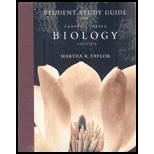
Concept explainers
List and describe the four functions common to all sensory pathways.
- a.
- b.
- c.
- d.
To list: The four functions that are common to all sensory pathways with their description.
Introduction: The process that converts the physical or chemical stimulus into a receptor potential is known as sensory transduction. When a stimulus is given, it leads to the closing and opening of ions channels that results in receptor potentials.
Explanation of Solution
The four functions that are common to all sensory pathways are as follows:
- Transmission:
- Integration:
- Perception:
- Amplification and adaptation:
The sensory information is transmitted as an action potential, and it moves to the CNS (central nervous system). The frequency of generated action potential and quantity of released neurotransmitter determines the magnitude of a receptor potential.
Graded potential from receptors sums up and starts the integration of the information from sensory neurons. This information integrates with CNS and complex receptors.
Sensory neurons pass impulse that routes into different parts of the brain. These parts of the brain interpret these impulses and produce the perception based on different stimuli.
Amplification is a process that strengthens the energy of a stimulus with the help of accessory structures of sense organs. The sensitivity of receptors cells decreases with continuous stimulation. This is known as sensory adaptation.
Thus, four functions that are common to all sensory pathways are transmission, integration, perception, and amplification and adaptation.
Want to see more full solutions like this?
Chapter 50 Solutions
Biology - Study Guide
- Distinguish a sensory receptor from an effector.arrow_forwardVisual information from the lateral geniculate area goes next to the: a. hypothalamus b. retina c. primary visual cortex d. thalamus 2. Which of the following are receptor cells of the auditory system? a. rods and cones b. hair cells c. basilar membranes d. sound bulbsarrow_forwardDescribe one situation in which these sensory neurons are important.arrow_forward
- list and describe the five major types of sensory receptors, and give an example of each?arrow_forwardList the four categories of sensory receptors and describe what each respondsto.arrow_forwardList the four kinds of information obtained from sensory receptors, and describe how the nervous system encodes each type;arrow_forward
- Regarding auditory physiology, what is the mechanism that generates an action potential and release of neurotransmitter substance? a) pressure waves on cells in the vestibular membrane b) movement of the membrane covering the round window c) movement of the hair cells of the coil member towards the tectorial membrane d) movement of cells in the basement membrane towards the cochleaarrow_forwardBlindsight is the condition in which someone with damage in the primary visual cortex reports that they cannot see an object, but can usually guess what that object is. This means that some visual representation must reach the frontal speech area. What non-thalamic pathway might do that? Question 8 options: A) The pathway through the suprachiasmatic nucleus B) The dorsal visual pathway C) The pathway through the superior colliculus D) The magnocelluar or M pathwayarrow_forwardOzana was born with cataracts, which made her completely blind. When she was 14 years-old she underwent surgery to remove the cataracts, which allowed visual input to be transmitted to her brain for the first time. However, even though the surgery was a success, Ozana’s vision was never fully functional. A) Describe how the features of neural plasticity might help to explain why Ozana’s vision was not restored. B) Propose one factor that might have increased the chance that Ozana would develop the ability to see, and briefly explain why.arrow_forward
- 2(1) Answer these questions well detailed in paragraphs and explained please. A) What are the five sensory organs? B) What are the nerve centers? What is each person's role? C) What factors could disturb the nervous system?arrow_forwardDescribe the functions of all sensory systems or the steps involved in detecting sensory stimuli.arrow_forwardIf your sensory systems, the first place in your cerebral cortex where information is processed is referred to as a _ area. a) association b) primary c) top d) secondaryarrow_forward
 Biology (MindTap Course List)BiologyISBN:9781337392938Author:Eldra Solomon, Charles Martin, Diana W. Martin, Linda R. BergPublisher:Cengage Learning
Biology (MindTap Course List)BiologyISBN:9781337392938Author:Eldra Solomon, Charles Martin, Diana W. Martin, Linda R. BergPublisher:Cengage Learning
 Human Physiology: From Cells to Systems (MindTap ...BiologyISBN:9781285866932Author:Lauralee SherwoodPublisher:Cengage Learning
Human Physiology: From Cells to Systems (MindTap ...BiologyISBN:9781285866932Author:Lauralee SherwoodPublisher:Cengage Learning Human Biology (MindTap Course List)BiologyISBN:9781305112100Author:Cecie Starr, Beverly McMillanPublisher:Cengage Learning
Human Biology (MindTap Course List)BiologyISBN:9781305112100Author:Cecie Starr, Beverly McMillanPublisher:Cengage Learning





